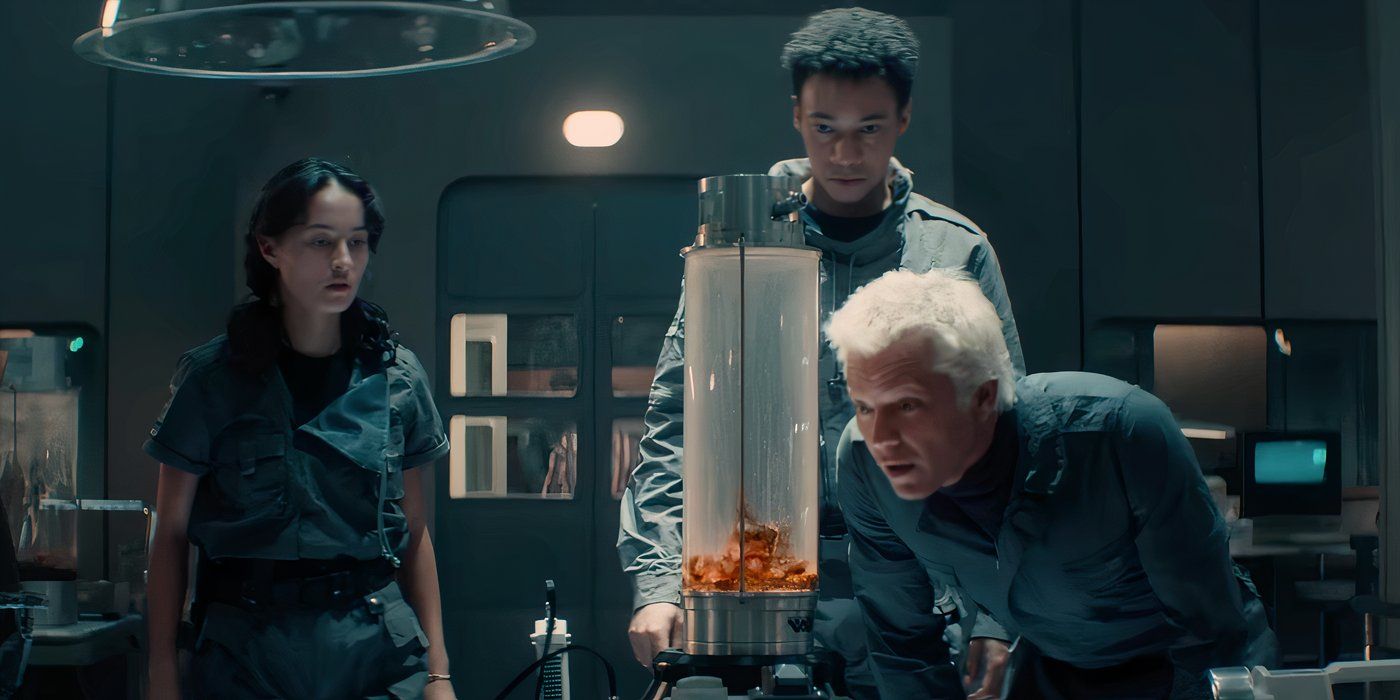The upcoming FX original Alien: Earth, helmed by Noah Hawley, is right around the corner and ready to unleash Xenomorphs on Earth for the first time (given that the Alien vs. Predator movies aren’t considered canon). The series will follow a group of new “hybrids” (synthetics infused with the consciousness of human children), created by the megacorporation Prodigy and owned by its CEO, Boy Kavalier (Samuel Blenkin), who are tasked with exploring a ship bearing several alien specimens that crash-lands on Earth. Said ship is owned by the corporation Alien fans love to hate, Weyland-Yutani, meaning their newly acquired specimens are now in the hands of the competition. But where does Alien: Earth fit into the franchise’s illustrious timeline ruled by the perfect organism? Let’s dissect where and when the franchise’s first venture into episodic storytelling takes place, and what it means for past and future Alien projects.
‘Alien: Earth’ Takes Place Right Before the Franchise’s Iconic Start
Alien: Earth takes place in 2120, two years before the events of the original Ridley Scott‘s masterpiece, Alien. This sets the show’s events as occurring right before the crew of the Nostromo were intended to head back to Earth, but were met with a mostly unfortunate demise at the hands of a Xenomorph. Many fans have always wondered if Weyland-Yutani knew of the dangers they were sending the crew of LV-426 into, and in a recent interview with Vanity Fair, Hawley teased, “I do know that at a certain point, the Weyland-Yutani Corporation is going to divert the Nostromo to that planet… We have the opportunity to maybe see what was happening on the other side of that phone call.” With Alien: Earth showcasing the company having captured the species before the events of Alien, the series has the chance to deliver big time on a connection between the two projects.
The sequels that follow the iconic Ellen Ripley (Sigourney Weaver), Aliens and Alien 3, both taking place in 2179, 57 years after the events of Alien, when Ripley is awoken from her long cryo-nap. The final film in the Ripley saga, Alien: Resurrection, follows a clone of the heroine and takes place 202 years after the events of Alien 3, in 2381. With all three of these films being so far ahead in the future compared to Alien: Earth, the connections between these will be few and far between, especially Alien 3 and Alien: Resurrection, but the FX series will feature heavy prominence from Weyland-Yutani, just like Aliens. While other projects have focused on the Weyland half of the business, Alien: Earth will also explore the matriarchal Yutani half of the company.
Will ‘Alien: Earth’ Have Any Connection to the Latest Alien Film?
Alien: Earth takes place 22 years before the 2024 summer hit, Alien: Romulus, which sits right in the middle of the events of Alien and Aliens in 2142. The events of the film were fairly contained to its core cast of characters, but it did feature massive connections to Alien and Prometheus.
Alien: Romulus sees the return of Rook (Ian Holm) from Alien, along with the black goo introduced in Prometheus, which has now been reverse-engineered by Weyland-Yutani into the “Prometheus Strain,” which is meant to be a potential cure for all diseases, just another way the corporation is searching for the answer to immortality. For any audience members looking for further answers about this strain in Alien: Earth, don’t get your hopes up. Hawley’s main inspiration for this project is far more restrained.
Ridley Scott’s Origin Movies Won’t Play a Factor in ‘Alien: Earth’
Prequel films Prometheus and Alien: Covenant take place in 2093 (at least for most of the movie) and 2104, respectively, placing the latter only 16 years prior to the events of Alien: Earth, which showcases why the mega-corporation Weyland-Yutani became obsessed with the brutal chestbursting and facehugging aliens in the first place. Even though Alien: Covenant and Alien: Earth are close together in the timeline, fans shouldn’t expect any connections similar to what played out Alien: Romulus.
Hawley previously expressed that this series took inspiration mainly from Alien and Aliens in the franchise and not the prequels, and in a SXSW panel with Inverse, he stated, “Ridley made Prometheus and engaged with another idea in terms of the origin of these creatures. It just wasn’t part of my DNA of how these movies worked. So, I chose not to engage with that part of the story and to just sort of speak to the Alien that I had encoded.” If anything, fans might look to Alien: Earth as a proper origin to the franchise, seeing as Scott’s attempts are seen as unnecessary and convoluted.
It’s an obvious statement that the Alien timeline can certainly be a lot to try and comprehend, especially with the newer projects taking place at different points throughout the almost 300-year span the seven films have covered. Hawley, seemingly recognizing that, wanted Alien: Earth to be easily approachable by first-time fans as well as seasoned diehards. During the same aforementioned SXSW panel, when asked about how Alien: Earth fits in canonically with the films, Hawley said, “For something that’s this old that’s had this many movies that’s jumped around in time periods, that if you try to chase it all or observe it all, you’ll go mad.” Keeping the focus simple yet concise is the perfect recipe for a television show, which seems to be paying off with positive reviews and a solid Rotten Tomatoes score. How exactly the events of the series may tie into Alien or Aliens are yet to be seen, but luckily, fans don’t have to wait long for answers.
Alien: Earth premieres with its two episodes on August 12 on FX and Hulu.










